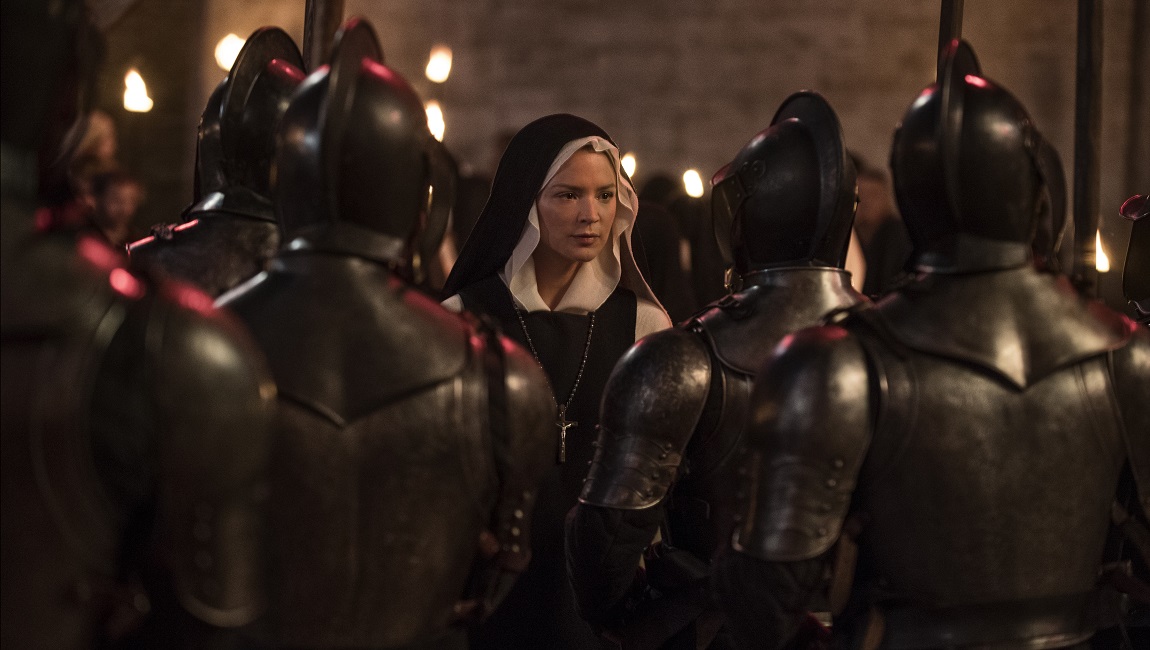In an interview with The Independent, famed French cartoonist Jean-Jacques Sempé stated, “there are terrible things in the world but I am not sure that it is the cartoonist’s job to address them.” Such frankness is appreciated, and makes sense: his career has been filled with everyday depictions of people and places that can be described as cozy and pleasant. Those in the United States may primarily know him for the work he’s done for The New Yorker’s cover illustrations, but in France he’s the artist behind Le Petit Nicolas (Little Nicholas), a comic strip centered around the titular character’s childhood. Over the decades it’s become a graphic novel, a live-action film, and now an animated feature by Benjamin Massoubre & Amandine Fredon. Fredon is the daughter of René Goscinny, the writer and co-creator of Little Nicholas, and one can view Little Nicholas — Happy as Can Be as a tender love letter to her father’s life and work.
Much of Massoubre and Fredon’s film stays faithful to the source material, embodying the looseness, low-key humor, and amiable atmosphere of the comics. The film, however, constantly hovers in noncommittal modes: it largely wants to maintain carefree depictions of boyhood in 1950s France, but it refuses to be just like those original comics. At first, we watch as animated versions of Sempé (voiced by Laurent Lafitte) and Goscinny (Alain Chabat) discuss the creation of Nicholas himself. It all happens in the span of a few minutes: the two talk over red wine, decide on the boy’s name after reading it on the side of a bus, and the rest is history. Initially, it feels like we’re given charming if slight historical context, but we periodically watch as Nicholas talks with Sempé, adding a nostalgic tenor to the film that doubles as a meditation on what art means and does. At the film’s conclusion, we hear that Sempé & Fredon’s life will live on through Nicholas — an obvious point, but made a bit more potent given that Fredon died in 1977.
Musings such as these are sweet but far too explanatory. It makes sense that these things are clarified in direct terms since this is a film targeted at children, but the result is a muddying of the film’s goals. It’s certainly not trying to have the deeper pontifications on creator and creation as found in Jean-François Laguionie’s Le Tableau, but it also isn’t comfortable to simply be a filmic expression of the Little Nicholas comics, like Winnie the Pooh (2011) or Ernest & Celestine. This tug of war makes the film’s varying, sometimes unrelated stories feel more disjointed than they should, as if they should have more of a structure à la Isao Takahata’s My Neighbors the Yamadas. The end result, then, is wistful longing about wistful longing — Little Nicholas was, in some ways, about an idealized life that its creators wished they and others could’ve had (during one sequence, we’re told about the Nazi occupation of Paris and how it impacted Goscinny’s life). The film separates the Little Nicholas parts from those featuring Sempé — there’s splotchy watercolor in the former — but it really wants to communicate the interconnectedness of all this. This contrast between an idealized vision of boyhood with real life only results in a feeling of being constantly interrupted. Little Nicholas — Happy as Can Be’s biggest fault is that it’s never as purely pleasurable as the material it draws from.
Published as part of Cannes Film Festival 2022 — Dispatch 5.







